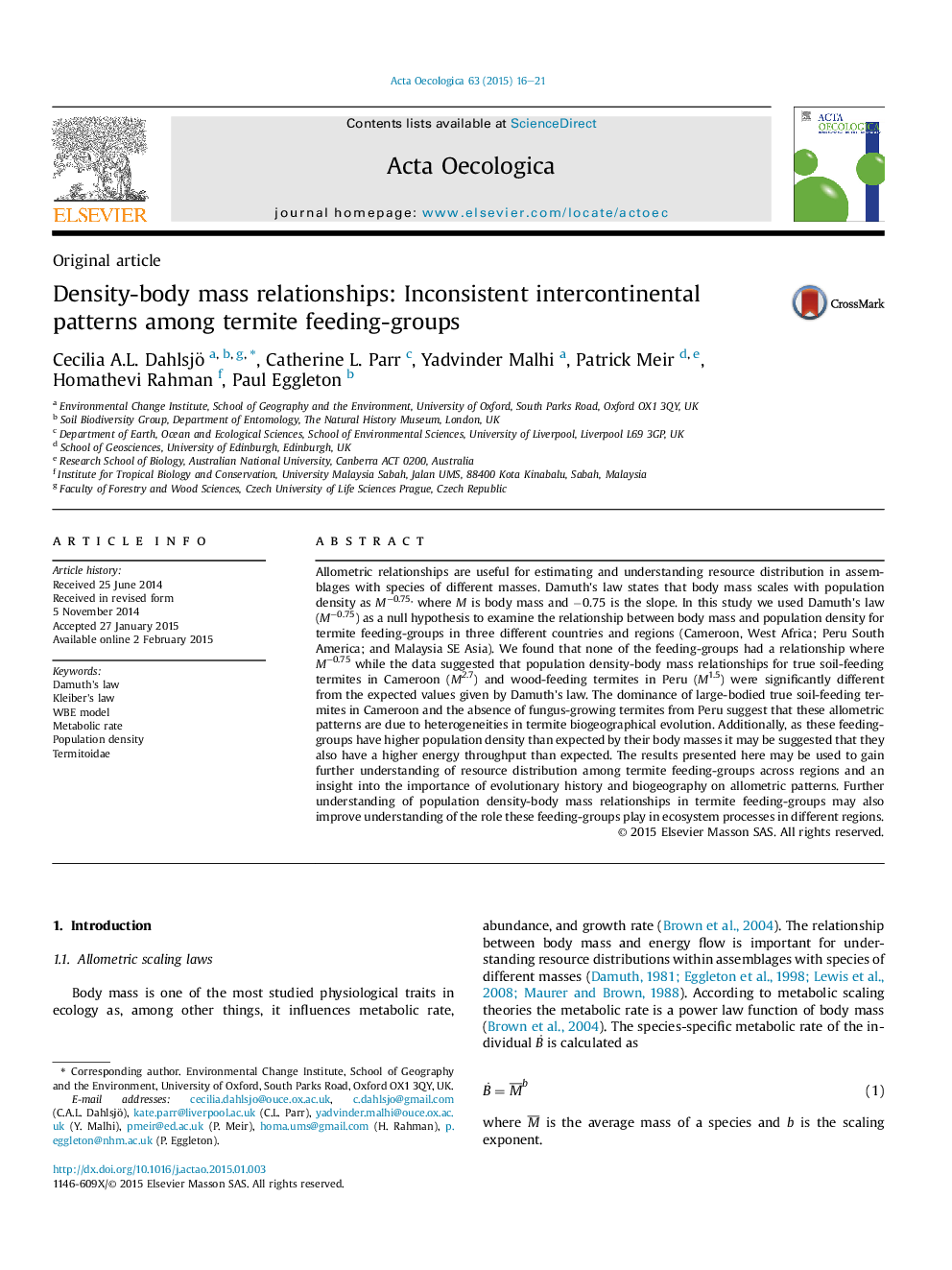| Article ID | Journal | Published Year | Pages | File Type |
|---|---|---|---|---|
| 4380668 | Acta Oecologica | 2015 | 6 Pages |
•Termite body mass scaling relationships may be explained by evolution.•We link scaling relationships in termites to ecosystem processes.•The results provide insights into inter-regional ecosystem processes.
Allometric relationships are useful for estimating and understanding resource distribution in assemblages with species of different masses. Damuth's law states that body mass scales with population density as M−0.75, where M is body mass and −0.75 is the slope. In this study we used Damuth's law (M−0.75) as a null hypothesis to examine the relationship between body mass and population density for termite feeding-groups in three different countries and regions (Cameroon, West Africa; Peru South America; and Malaysia SE Asia). We found that none of the feeding-groups had a relationship where M−0.75 while the data suggested that population density-body mass relationships for true soil-feeding termites in Cameroon (M2.7) and wood-feeding termites in Peru (M1.5) were significantly different from the expected values given by Damuth's law. The dominance of large-bodied true soil-feeding termites in Cameroon and the absence of fungus-growing termites from Peru suggest that these allometric patterns are due to heterogeneities in termite biogeographical evolution. Additionally, as these feeding-groups have higher population density than expected by their body masses it may be suggested that they also have a higher energy throughput than expected. The results presented here may be used to gain further understanding of resource distribution among termite feeding-groups across regions and an insight into the importance of evolutionary history and biogeography on allometric patterns. Further understanding of population density-body mass relationships in termite feeding-groups may also improve understanding of the role these feeding-groups play in ecosystem processes in different regions.
